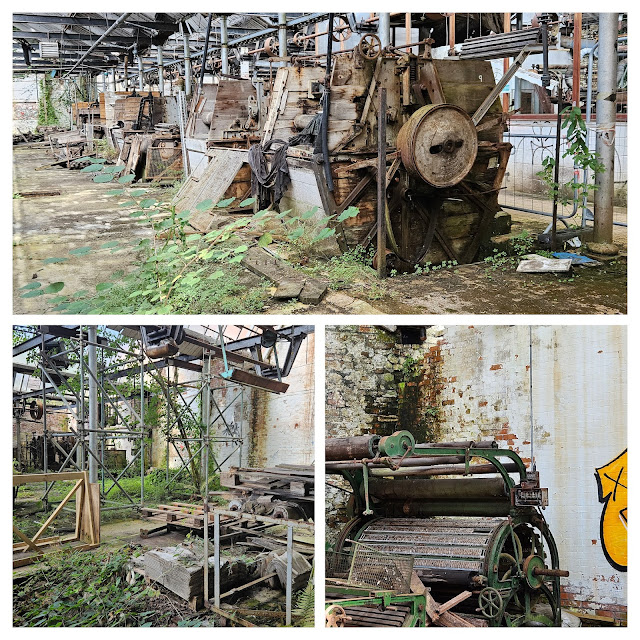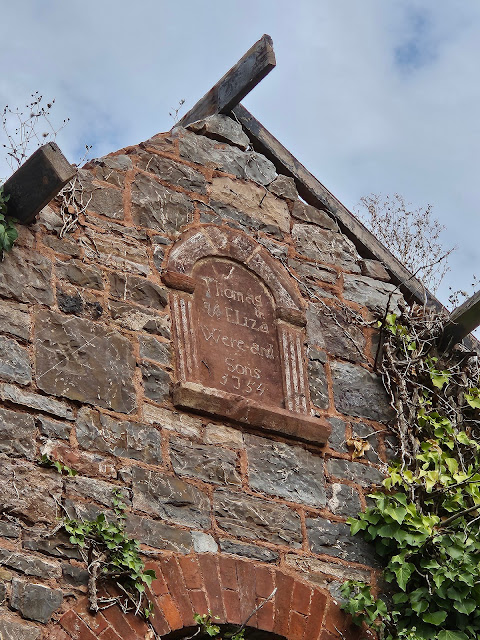Local History: Toneworks Heritage Tour
Our local council have fairly recently purchased Toneworks, which is an abandoned dyeing and finishing textile mill. It is part of two sites in Wellington, the other being Tonedale Mill both of which are what was the Fox Brothers factory. They have carried out extensive works to decontaminate and remove asbestos and are now in the process of sensitively reconstructing it.
Nature has really tried to reclaim the factory. In one space a rowan tree has taken root in the detritus that had built up in the floor. There are also bats roosting in some of the buildings (they do have a bat licence) and whatever happens to the building eventually may well incorporate some kind of bat cam. I really love the idea of leaving the nature there and trying to work with it.
Because the works required a regular supply of water, there is a leat in one part of it, and contractors have noticed otters using the space!
One of the reasons why this site is of such historical interest is because there are examples of many different sources of power in the dyeing and finishing process, from water wheels and steam power to early electricity. Somerset Council are quite keen to keep any new sources of power sustainable, and the site has a number of ideally sited south facing roofs that would take solar panels that would not only power the site but also potential the immediate local area.
I love this little office which would have overseen the finishing room. Next to it was an old clocking in machine. Apparently the Fox Brothers also had their own bank and workers were paid with their own bank notes.
In the photo below, you can see the cast iron tanks through the first floor windows, which were quite a problem for the team. They weigh forty tonnes and they had to erect special supports from above because the supports underneath were not strong enough.
The factory was used a lot by the military in the war, mainly because the dye that Fox Brothers used did not run. They specialised in indigo and khaki dyes and produced a lot of puttees. I love that you can still see some of the fabric, abandoned in the machine when the factory shut in 2000.
I found the tour really fascinating, and the guides, Jack and Amy were so informative. The season of tours is fully booked but they are hoping to offer more at some point. It's great to find out about your local history.
Love Mrs Jones x
Disclaimer: Any historical facts here are as I have remembered them from the tour, and are not independently verified.











Comments
Post a Comment
I love to hear your views on my blog, so please do stop by and comment!